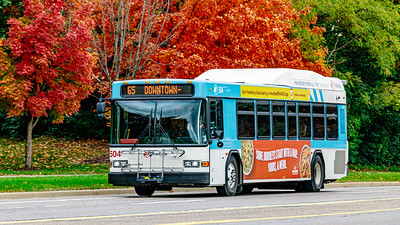Of the many things students in Los Angeles need to worry about, transportation won’t be one of them. The Metropolitan Transportation Authority Board approved a pilot program last month to offer free transportation for K-12 and community college students. Eligible students can ride MTA trains and buses in Los Angeles with no limits through June 2023. The MTA expects the program to cost about $50M and will use federal funds to cover its costs.
In addition to the Los Angeles Unified School Districts, at least 41 schools and school districts have expressed interest in participating in the free transportation program. If all interested districts sign on, the program could provide free transportation to nearly three-fourths of a million students.
MTA will use nearly $42M in American Rescue Plan funds to pay for the program. In addition, participating schools and school districts will also chip in.
Free transportation better use of ARP funds than covering Fitness Center losses
Offering students free transportation is one of the allowable uses of the American Rescue Plan funds. A study funded by the National Institutes of Health showed that providing free public transportation to low-income families could save them $2.5M annually. In addition, free transportation could significantly reduce the number of unexcused absences. It also eliminate one thorny problem: the number of youths charged with fare evasion. Fare evasion (a civil infraction) can incur a $100 fine.
A similar program could work (and has worked) for Washtenaw Community College students. The Ann Arbor Area Transportation Authority offers sponsored fares. Participating higher education institutions include UM and EMU. Offering unlimited public transportation passes would not only improve students’ ability to get to campus. It would also improve their ability to get around town for work. Previously, WCC had sponsored certain routes for students, depending upon whether they were coming to or leaving campus.
Instead of spending American Recovery Act funds to paper over their own poor financial decision-making, WCC administrators could spend these funds to help students get to school and work. Transportation is one of the highest-cost items in a student budget. Lack of reliable transportation can put enormous pressure on students, making it difficult for them to attend classes or hold steady employment. Instead of making students ask for transportation assistance, or cherry-picking routes or travel directions, make public transportation available to every WCC student at no cost.
Who knows? It might even have a positive impact on both enrollment and persistence.
Photo Credit: Wu Haoxiang , via Flickr



























